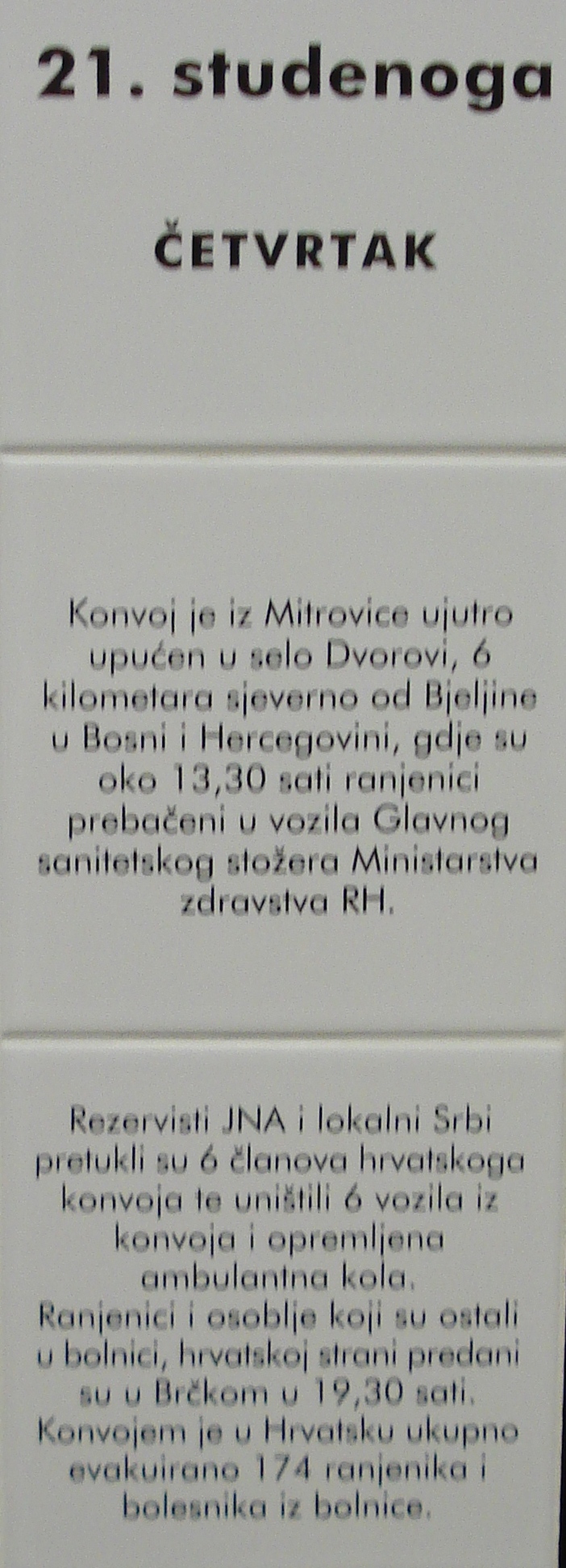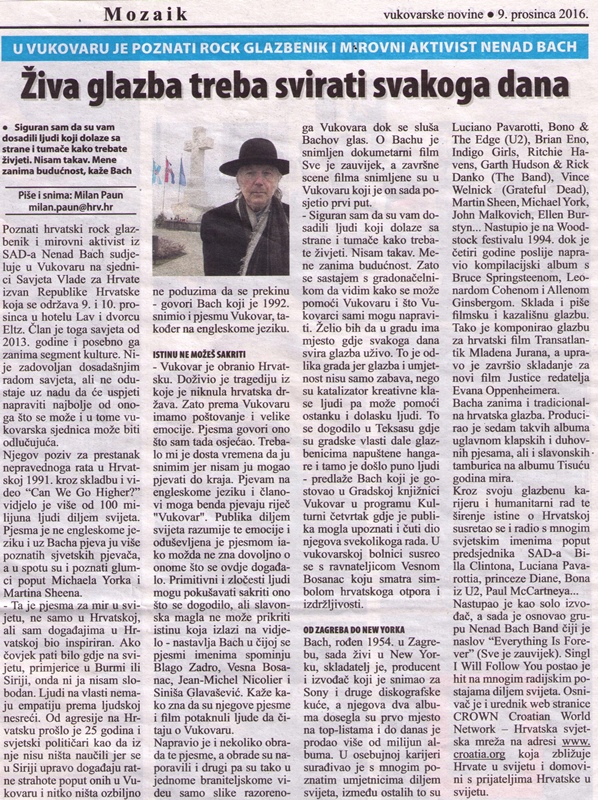 | Dr. Vesna Bosanac was born in 1949 in the city of Subotica, and her family moved to the Borovo Naselje near Vukovar when she was less than 1 year old. Her grandmother was Bunjevci Croatian. Since July 1991, during the Serbian military aggression on Croatia, she was emolyed as the director of the famous Vukovar Hospital. Until the end of 1991, during the most savage bombing and shelling of the city, The Vukovar Hospital took care of about 4000 people. About 2250 people underwent difficult and long term operations. Each day approximately 700 (seven hundred) granades was falling on the building of the hospital. |



| Dr. Vesna Bosanac Dr. Vesna Bosanac was born in 1949 in the city of Subotica, and her family moved to the Borovo Naselje near Vukovar when she was less than 1 year old. Her grandmother was Bunjevci Croatian. She studied medical sciences at the University of Zagreb, specilizing in pediatrcs. Since July 1991, during the Serbian military aggression on Croatia, she was emolyed as the director of the famous Vukovar Hospital. Until the end of 1991, during the most savage bombing and shelling of the city, The Vukovar Hospital took care of about 4000 people during the Serbian 1991 aggression, until November 20th, 1991. About 2250 people underwent difficult and long term operations. Each day approximately 700 (seven hundred) granades was falling on the building of the hospital. The work of medicinal staff was going on in extremely difficult conditions, often without necessary equipment, even without electricity, food and water, in the celler and atomic shelter of the hospital, since the building was totally destroyed. With late Dr. Juraj Njavro, Dr. Vesna Bosanac is the most important person for organizing medical care in Vukovar. Both of them are decorated with the highest Croatian state distinctions. The Vukovar Hospital in 1991 History of Croatian medicine |


From this spot, on 18 November 1991, the ex-Yugoslav Army and Serbian paramilitary
took 261 wounded Vukovar defenders, civilians and members of the hospital staff.
Two hundred of them have been assasinated, contrary to the Geneva Convention.
The destiny of the rest is unknown.
On the photo, Mrs. Verica Thune-Kostelić from Zagreb.
| We provide the names of twenty emloyees of the War Vukovar Hospital executed at Ovčara near Vukovar (the mass grave contains more than 200 persons executed by Serbian military):
Four employees of the Vukovar Hospital that were detained druging the Serbian occupation of the city in 1991, and whose destiny is still not known, are:
Twelve identified employees of the Vukovar Hospital, assasinated or victims of the 1991 aggression:
In conclusion, there are altogether thirty two (32) employees of the Vukovar Hospital, victims of the Serbian aggression on the city, and four detained employees whose destiny is unknown. |







| More than two hundred and sixty Croats have been transported by the Serbs from the Vukovar hospital to the nearby location of Ovčara, killed there and dumped in a massive grave in one day. Below is the list of victims from the Vukovar Hospital. It should be emphasised that this is just a part of Vukovar's victims: there were 1624 victims of the 1991 Serbian aggression (105 of them were soldiers), 2500 wounded (500 of them invalids), and the destiny of 350 is still unknown. About 8000 people went through Serbian concentration camps, maltreated in various ways, by tortures, psychical exhausting, rapes, etc. |
Početkom listopada 1991. na farmi Ovčara, pet kilometara istočno od Vukovara, srpski agresori otvorili su konc logor. Kroz njega je prošlo oko 4000 zatočenika. U ovom logoru ubijeno je 200 zatočenika, a ostali s ovoga popisa još se vode kao nestali. Many thanks to Mr. Mladen Pavković, Koprivnica, Croatia, for the list. |

| In 1997 the hospital was reintegrated into the medical system of the Republic of Croatia, and in 1998 its complete renewal was started. |


| Vukovar water tower is one of the symbols of the city of Vukovar during the Battle of Vukovar and the Croatian War of Independence, when the water tower and the city itself were largely destroyed by the ex-Yugoslav (i.e., Serbian) forces. |

Nenad Bach at the top of the Vukovar water tower. Stop the wars. World Peace in One Hour. Photo by Vanja Vidakovic.

